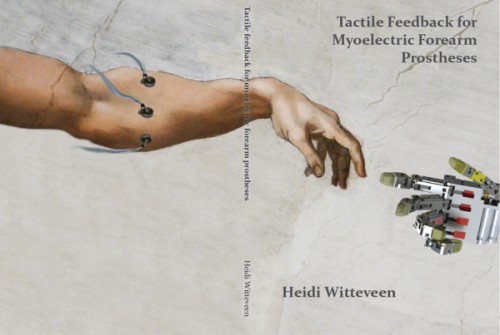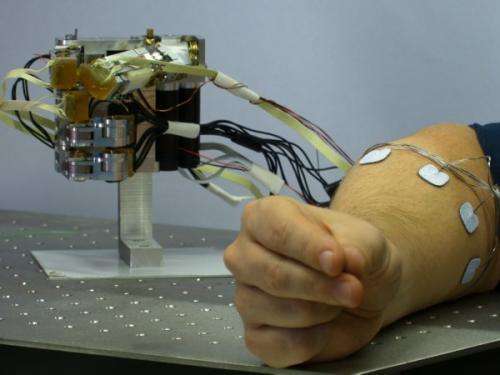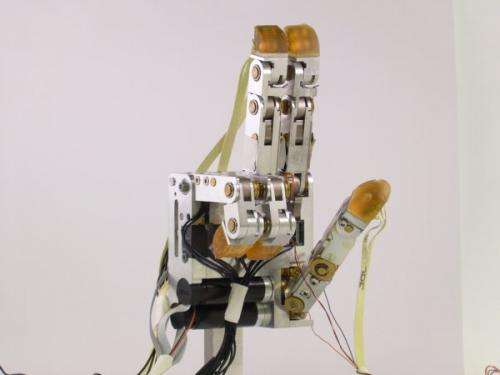Researchers develop ultramodern forearm prosthesis

Researchers of the University of Twente (UT) and Roessingh Research and Development (RRD) have developed a system which can significantly improve the functionality of forearm prostheses. Using the activity still present in their remaining arm muscles (myoelectric control), patients are able to have a more natural control of the prosthesis. Actuators also provide the user with information about movement and the amount of force applied. This Myopro project has led to an ultramodern forearm prosthesis prototype and should increase user acceptance.
Of all patients receiving a forearm prosthesis, no more than thirty percent actually use it in their daily life. Existing prostheses are often too heavy, offer only limited movement (often no more than the ability to open and close the hand) and do not provide sensory feedback, the user only perceiving what the hand is doing by looking at it with their own eyes. Improving all of these aspects is essential to achieving higher user acceptance. PhD candidates Heidi Witteveen and Bart Peerdeman of the Unversity of Twente and Daphne Broere of Roessingh Research and Development developed a new system. Thanks to the new system, forearm prosthesis acceptance is bound to increase.
Zipping coats or folding clothes

The prosthesis system sets new standards with regard to sensing, control and feedback. The system enables people with a prosthesis to perform more grasp types, making it easier to grasp things. Because the system provides feedback through sensory signals, users are better able to control the prosthesis in situations where their vision is impaired. One of the advantages of such sensory feedback may be that users will be less prone to applying too much force or dropping objects. Patients don't need to concentrate as much on using the prosthesis. In addition, the 'healthy' hand is less often relied on. Patients will be better able to switch from one task to the next and to perform more complicated movements, such as zipping a coat or folding a piece of clothing.
Electrodes measure muscle signals

University of Twente PhD candidate Heidi Witteveen: "The existing prostheses lack sensory feedback. Controlling your movement is difficult and you don't know how much pressure you are putting on a subject or to what degree you have opened your hand. After a hand amputation, the muscles for controlling movements are often still partly intact, as they are located in your forearm. This means your brain can still send signals. By using EMG electrodes we can measure those signals. The actuator in the mechanical control module converts these signals into more varied movements and grasp types.
"Sensors on the hand, for example between your thumb and forefinger, measure the amount of force you are applying. Electric stimuli, experienced as some kind of tingling in the skin, and vibrations are then used to provide feedback to the patient. This so-called vibrotactile feedback is comfortable and not painful. Coin vibration motors have been incorporated in the feedback system. These are the same type of motors as the ones causing your cellphone to vibrate. The Myopro project made use of simulation models. The system was tested in possible users, making use of virtual reality and like techniques. We have by now developed a prototype in which all three systems - sensing, control and feedback - are combined. The results are encouraging."


















